January 20, 2025
Degradable vs. PCR: Which Sustainable Packaging Solution is Right for Your Business?
Navigating sustainable packaging options is no easy feat for food growers and packers. With sustainability requirements evolving at a breakneck pace, meeting retail demands and environmental goals can feel like trying to hit a moving target. Add to that the lack of viable packaging solutions that perform well or fit within a cost that makes sense for business.
We understand the pressure you’re under to find packaging options that meet these demands without sacrificing your bottom line. In this article, we break down two of the most talked-about materials in sustainable packaging—Post-Consumer Recycled (PCR) and degradable plastics—and explore how to make the best choice for your business.
Definitions and Key Differences
What is PCR?
Post-Consumer Recycled (PCR) materials are made from recycled products, such as used plastics, that have been reprocessed into new packaging materials. Using PCR helps close the recycling loop and reduces the need for virgin plastics, which supports the goal of a circular plastics economy many countries are striving for. Because PCR plastic is fairly easy to source compared to other sustainable materials and doesn’t require any novel manufacturing process, many retailers identify PCR plastic as a critical steppingstone to their larger sustainability initiatives. Many of the 2025 retailer packaging requirements outline a percentage of PCR that your packaging needs to have in it.
What is Degradable?
Degradable materials are plastics engineered to break down more quickly than traditional plastics under specific conditions. Sev-Rend’s bio-ABLE™ packaging, for example, begins degrading within twenty-four months in marine or terrestrial environments and leaves no microplastics behind.
Biodegradable vs. Degradable: What’s the Difference?
While the terms are often used interchangeably, they are not the same. Biodegradable materials are broken down by microorganisms into natural elements like water, carbon dioxide, and biomass within twelve months. Degradable plastics, on the other hand, undergo a chemical process that breaks their molecular structure, making them disintegrate faster than traditional plastics, but they may take longer than twelve months and require specific environmental conditions to do so.
PCR (Post-Consumer Recycled) Plastic | Degradable Plastic | |
Environmental Impact | Reduces reliance on virgin materials and diverts plastic waste from landfills and oceans. | Breaks down in specific environments to mitigate long-term plastic pollution; no microplastics remain. |
End-of-Life Options | Supports established recycling systems, keeping materials in the circular economy. | Breaks down into natural elements under specific conditions, useful where recycling is unavailable. |
Cost Implications | Typically more cost-effective due to established manufacturing and infrastructure. | Higher costs, reflecting the specialized nature of degradable material production. |
Consumer Appeal | Resonates with consumers focused on recycling and reducing overall waste. | Appeals to eco-conscious consumers concerned with microplastics and pollution in sensitive ecosystems. |
Retail Compliance | Meets or exceeds mandates like 20% PCR content and 15% reduction in virgin plastics by 2025. | Can complement compliance by addressing alternative waste management scenarios. |
Practical Considerations | Easy to integrate into existing packaging systems with minimal disruption. | May require more testing to ensure compatibility with current operations and production lines. |
Primary Use Cases | Ideal for packaging with high recycling potential, like pouches, films, and bags. | Best for applications where recycling infrastructure is lacking or environmental leakage is a concern. |
Choosing the Right Supplier
Finding the right supplier can make or break your sustainability strategy. Here’s what to look for:
A Reliable Partner
Choose a supplier who prioritizes your business’s unique needs over one-size-fits-all solutions. At Sev-Rend, we specialize in tailoring sustainable packaging to your operation, ensuring it works seamlessly in your production lines.
Expertise in Regulatory Requirements
The landscape of sustainability regulations is complex and constantly evolving. Retailer-driven mandates, like Walmart’s requirement for 20% PCR content and 15% virgin plastic reduction by 2025, and legislation such as Extended Producer Responsibility (EPR) laws, can create significant challenges for food packers and growers. Finding a partner to help you navigate these rules is essential not only to maintain shelf space but also to position your brand as a leader in sustainability.
At Sev-Rend, our in-house sustainability experts help you do exactly that. We’re dedicated to staying ahead of industry changes and helping you do the same. With our EcoVadis certification and in-house GRI-certified expert, Mark Hoppenjans, we simplify the complexity for you.
We make sure you stay ahead of the curve by:
- Monitoring regulatory shifts to ensure you remain compliant.
- Providing actionable insights into how changes affect your operations.
- Tailoring packaging solutions to meet specific retailer requirements and local legislation.
Key Questions to Ask a Supplier
- Can your solutions meet my production and sustainability goals?
- Do you offer materials that comply with retailer mandates for PCR content or other alternative packaging solutions?
- Are your materials strategically sourced to minimize supply chain disruptions and environmental impact?
In today’s competitive landscape, choosing the right packaging isn’t just about sustainability—it’s about ensuring your business thrives while meeting growing environmental expectations. Whether you’re looking for degradable materials like bio-ABLE™ or PCR solutions like pcr-ABLE™, we have the expertise and products to support your goals.
Ready to switch to smarter packaging? Connect with a sustainable packaging expert today to discuss your needs.
The 2025 Sustainable Food Packaging Guide for US Packers
A clear, practical guide to upcoming 2025 retailer packaging and material requirements.

